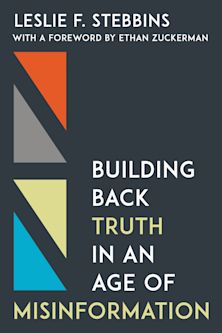Health and Science Journalism in the Twenty-First Century
Emerging Practices during Crises
Health and Science Journalism in the Twenty-First Century
Emerging Practices during Crises
This product is usually dispatched within 1 week
- Delivery and returns info
-
Free US delivery on orders $35 or over
Description
This edited volume explores the evolving practices and essential role of health and science journalists as they cover topics like conflict, displacement, and global pandemics. Amid a changing media landscape and new communication technologies, journalists in various countries report facing similar key challenges, stressors, and threats to professionalism. Contributors identify and explore these shared challenges, including funding cuts, unrealistic expectations for productivity, public mistrust and disregard for facts, and increasingly polarized coverage, and they note that these challenges are further intensified for journalists living and working in the Global South. Factors like the COVID-19 pandemic and geopolitical conflict continue to disrupt economic and social systems and increase global inequities, including health outcomes, making the role of health and science journalists more crucial than ever. Contributors to this volume provide diverse perspectives and methodologies across a spectrum of communities and regions, unpacking the numerous roles that journalists and media organizations play during crises with chapters investigating topics including newsroom experiences, perceived influences on their professional identities, and the use of AI in journalism. Ultimately, this book illustrates the dramatic changes and new challenges to health and science journalism in the twenty-first century and highlights the resilience and adaptability of these journalists as they navigate unprecedented challenges to inform the public. Scholars of journalism, communication, public health, sociology, and political science will find this book of particular interest.
Table of Contents
Maria E. Len-Rios, Amanda Hinnant, and Rachel Young
Chapter Two: Crisis Journalism and Professional Role Conceptions: A Survey of Journalists in Bangladesh
Khairul Islam and Pradeep Sopory
Chapter Three: Fighting COVID-19 Vaccine Hesitancy in Africa: Reflections of Journalistic Attitudes in Coverage
Abena Yeboah-Banin, Gilbert Kuuim Muobom Tietaah, Audrey Gadzekpo, Jade Ampomaah Baah, and Daniel Kwame Ampofo Adjei
Chapter Four: Journalists' Perspectives on Artificial Intelligence and Health and Science News Coverage in Ghana
Gifty Appiah Adjei
Chapter Five: Collaboration is Key: How Rapidly Mobilized Journalist-Researcher Task Forces can Tackle Crisis Communication During a Global Pandemic
Natasha A. Strydhorst, Asheley R. Landrum, Kat Snow, Sue Ellen, Sevda Eris, Scott Burg
Chapter Six: Communicating Health Information to Rural Communities in the 21st Century: Local Journalists as Trusted Messengers
Ch'Ree Essary, Natasha Strydhorst, Javier Morales Riech, Asheley R. Landrum
Chapter Seven: Journalists' Responsibility in Communicating about Public and Corporate Health Crises: Opportunities Afforded by Social Media
Janine Nadine Blessing, Cassandra L.C. Troy, Nicholas Eng, Jin Chen
Chapter Eight: Literacy in Science and Journalism as a Weapon in the Post-truth Era Crisis
Avshalom Ginossar
Chapter Nine: Understanding Climate Journalism in Pakistan
Shabir Hussain and Jamal Ud Din
Product details
| Published | Feb 26 2025 |
|---|---|
| Format | Hardback |
| Edition | 1st |
| Extent | 232 |
| ISBN | 9781666949582 |
| Imprint | Lexington Books |
| Illustrations | 11 BW Illustrations, 4 Tables |
| Dimensions | 9 x 6 inches |
| Publisher | Bloomsbury Publishing |
Reviews

ONLINE RESOURCES
Bloomsbury Collections
This book is available on Bloomsbury Collections where your library has access.

































